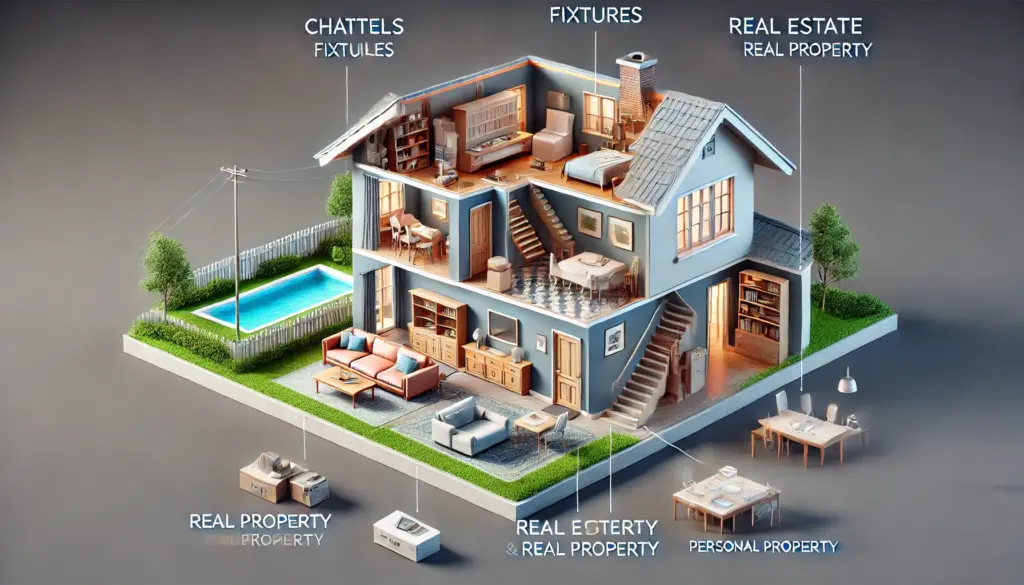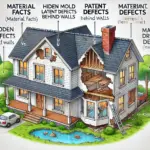When buying or selling a home, understanding specific terms is essential for smooth transactions. Key terms include chattels, fixtures, real estate, real property, and personal property. Let’s dive deeper into these concepts.
Chattels vs. Fixtures
Chattels
Chattels are movable items of personal property that are not permanently attached to the property. They are typically taken by the seller when they move out. The defining characteristic of chattels is their mobility and lack of permanent attachment to the property.
Detailed Examples:
- Furniture: Couches, chairs, tables, and beds are all chattels because they can be moved without altering the property.
- Appliances: Freestanding refrigerators, stoves, and washers/dryers that are not built into the cabinetry or walls.
- Decor: Paintings, curtains, and decorative items that are not affixed to the walls.
- Tools and Equipment: Lawn mowers, garden tools, and portable generators that are not integral parts of the property.
Fixtures
Fixtures are items that are permanently attached to the property. They are considered part of the property and usually stay with the house when it is sold. The key feature of fixtures is their permanent attachment, meaning removing them would cause damage to the property or alter its function.
Detailed Examples:
- Built-In Appliances: Ovens, dishwashers, and microwaves that are built into the kitchen cabinetry.
- Lighting: Chandeliers, ceiling fans, and recessed lighting that are installed into the ceiling or walls.
- Plumbing: Sinks, toilets, and bathtubs that are plumbed into the property’s plumbing system.
- Flooring: Wall-to-wall carpeting, hardwood floors, and tiles that are installed permanently.
- Structural Additions: Built-in shelves, cabinets, and closets that are permanently fixed to walls.
Real Estate vs. Real Property
Real Estate
Real estate refers to the physical land and everything permanently attached to it, such as buildings, trees, and minerals. It encompasses the tangible aspects of property ownership.
Detailed Examples:
- Residential Property: Houses, duplexes, and apartment buildings along with the land they occupy.
- Commercial Property: Office buildings, retail spaces, and warehouses, including the land they are on.
- Agricultural Land: Farms, ranches, and vineyards with their respective structures like barns and stables.
- Natural Resources: Timber, mineral deposits, and water sources on the property.
Real Property
Real property includes the real estate (land and buildings) and also encompasses the bundle of legal rights associated with owning the land and buildings. These rights include the right to sell, lease, and use the property in various ways. Real property is a broader concept that includes both the physical aspect (real estate) and the legal rights tied to ownership.
Detailed Examples:
- Ownership Rights: The right to occupy the property, sell it, lease it out, or transfer it to heirs.
- Easements: The right to use someone else’s land for a specific purpose, such as a driveway or utilities.
- Air Rights: The right to develop or use the space above the property, which can be particularly valuable in urban areas.
- Water Rights: Rights to use water from a stream, river, or lake adjacent to the property.
Personal Property
Personal property refers to movable items that are not permanently attached to the land or buildings. These items are owned by the individual and can be taken when they move.
Detailed Examples:
- Household Items: Furniture, kitchen utensils, and small appliances like toasters and coffee makers.
- Electronics: Televisions, computers, and audio equipment that are not built into the property.
- Clothing and Personal Items: Clothes, jewelry, and personal effects.
- Vehicles: Cars, motorcycles, bicycles, and recreational vehicles.
Summary
Understanding the differences between chattels, fixtures, real estate, real property, and personal property is crucial for both buyers and sellers in real estate transactions.
- Chattels: Movable items not attached to the property (e.g., furniture, portable appliances).
- Fixtures: Items permanently attached to the property (e.g., built-in appliances, lighting fixtures).
- Real Estate: Physical land and everything permanently attached to it (e.g., buildings, trees).
- Real Property: Real estate plus the legal rights of ownership (e.g., rights to sell, lease, and use).
- Personal Property: Movable items not permanently attached to the land or buildings (e.g., electronics, clothing).
By clearly distinguishing these terms, buyers and sellers can avoid misunderstandings and ensure a smooth real estate transaction. This knowledge helps in making informed decisions and understanding the scope of what is included in a property sale.



